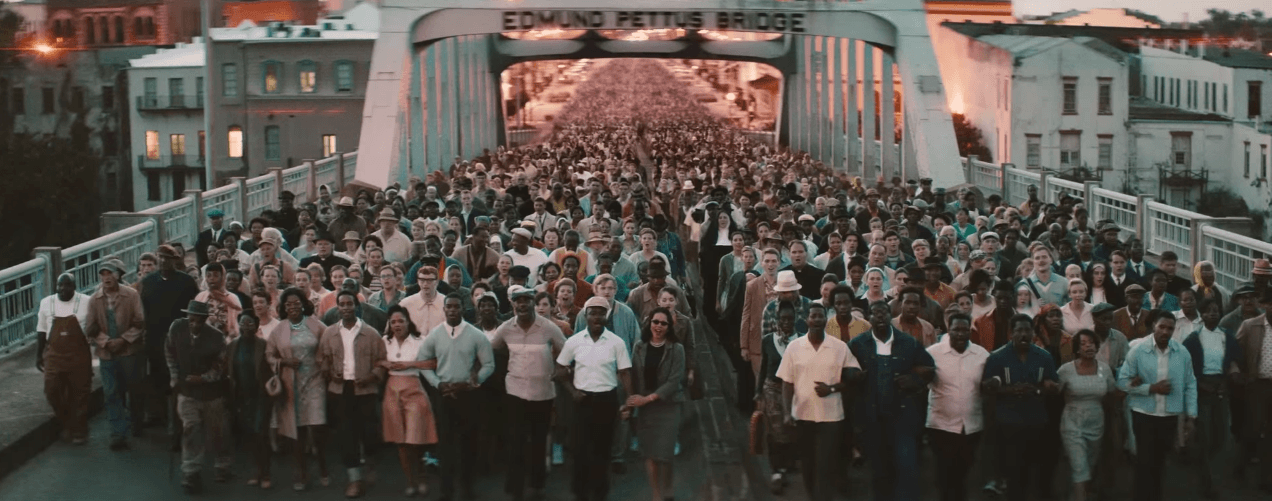Civil Rights Movement showcased in ‘Selma’
3 min read
By HOPE RACINE
It’s difficult to think critically about a movie like “Selma.”
The 2015 civil rights historical drama checks all the boxes of a good movie. The film is extremely well casted – Tom Wilkinson makes a very convincing President Lyndon Johnson, Nigel Thatch provides a brief and well-executed appearance as Malcom X and David Oyelowo shines as Martin Luther King, Jr.
Like many historical dramas, it embellishes a bit. There are historical inaccuracies, specifically in regards to Johnson’s role, but the bones of the story are all true. In 1965, Martin Luther King, Jr. and the rest of the Southern Christian Leadership Conference set their eyes on Selma, Alabama as their next project. Running off the success of the March on Washington, and desegregating Alabama, the next goal was to secure voting rights for the citizens of Selma.
In 1965 Selma, along with much of the South, African Americans were technically allowed to vote – but as the movie shows during a painful opening scene, there were multiple systematic laws in place that made it almost impossible to fulfill this goal.
An early scene shows Annie Lee Cooper, played by Oprah Winfrey, as she attempts to register to vote. She is met with contempt and frustration when the clerk forces her to recite the preamble of the United States Constitution and the circuit judges in Alabama. Cooper fails when she is unable to recite the names of all 67.
Later in the movie viewers see the SCLC attempt to find the best legal avenue to pursue, which provides a larger conversation about the barriers between African Americans and the vote. To register, individuals must have a voucher from a pre-registered individual. There are knowledge tests that can be given on demand, and a charge for every year the individual went unregistered. At one point it is mentioned that 50 percent of the population in Selma was African American, but only two percent of them were registered to vote.
The movie also touches on some of the tensions King faced throughout his life that history forgets. They give ample time to his tenuous relationship with other civil rights leaders, such as Malcolm X and the Student Nonviolent Coordinating Committee.
In addition, “Selma” sheds light on the marital troubles between King and his wife Coretta, who is played with effortless grace by Carmen Ejogo. It seeks to provide an answer to the long-standing rumor that King was caught in an extramarital affair on tape. These scenes are placed to show the tension that surrounded King on all sides, and, more importantly, to show that like everyone else fighting for equality, King was just a man.
This is what “Selma” does very well – instead of making a dramatic biopic of King, it focuses less on the man and more on the movement, shining light on individuals who are sometimes lost in King’s shadow. It focuses less on King’s motivations and inspiration and more on the tactics and planning that went into marching thousands of people through the Alabama heat for five days.
However, historical accuracy, good casting and notable screen writing all mean nothing when watching people run for their lives as they are ridden down and beaten in the head. There is very little that can prepare audiences for the several scenes of police brutality, screaming children and horrifying violence.
In any other movie, these scenes would not be as shocking, or illicit the same level of horror; but audiences are unable to escape the fact that these scenes are true. This is history and fact, and “Selma” does not attempt to downplay those facts.
With the backdrop of the Vietnam War, “Selma” is a startling and moving depiction of war on the home front, one that audiences will have a hard time forgetting.












Glaring typo anyone?